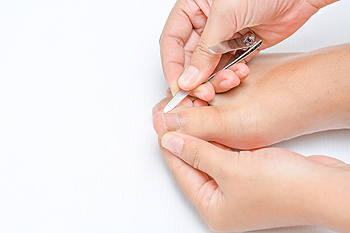
Ingrown toenails can result in a painful and debilitating condition if not addressed promptly. Treatment options for an ingrown toenail vary. Nonsurgical methods, suitable for mild to moderate cases, include wearing appropriate footwear, managing fungal infections, and soaking the afflicted foot. A podiatrist may also suggest applying steroid creams and may use cotton or dental floss to lift the nail edge. Other specialized treatment includes applying tape to pull the nail fold away, employing gutter splints, or creating cotton nail casts. Surgical options become necessary for more severe cases. In these cases, a podiatrist may perform a partial nail avulsion, wedge excision or total nail avulsion. Each method aims to alleviate pressure on the nail fold, thus reducing trauma and preventing recurrence. If you have an ingrown toenail, it is suggested that you schedule an appointment with a podiatrist who can perform the treatment method that is right for you.
Ingrown toenails may initially present themselves as a minor discomfort, but they may progress into an infection in the skin without proper treatment. For more information about ingrown toenails, contact Charles Passet, DPM of Forest Hills. Our doctor can provide the care you need to keep you pain-free and on your feet.
Ingrown Toenails
Ingrown toenails are caused when the corner or side of a toenail grows into the soft flesh surrounding it. They often result in redness, swelling, pain, and in some cases, infection. This condition typically affects the big toe and may recur if it is not treated properly.
Causes
- Improper toenail trimming
- Genetics
- Improper shoe fitting
- Injury from pedicures or nail picking
- Abnormal gait
- Poor hygiene
You are more likely to develop an ingrown toenail if you are obese, have diabetes, arthritis, or have any fungal infection in your nails. Additionally, people who have foot or toe deformities are at a higher risk of developing an ingrown toenail.
Symptoms
Some symptoms of ingrown toenails are redness, swelling, and pain. In rare cases, there may be a yellowish drainage coming from the nail.
Treatment
Ignoring an ingrown toenail can have serious complications. Infections of the nail border can progress to a deeper soft-tissue infection, which can then turn into a bone infection. You should always speak with your podiatrist if you suspect you have an ingrown toenail, especially if you have diabetes or poor circulation.
If you have any questions, please feel free to contact our office located in Forest Hills, NY . We offer the newest diagnostic and treatment technologies for all your foot care needs.

